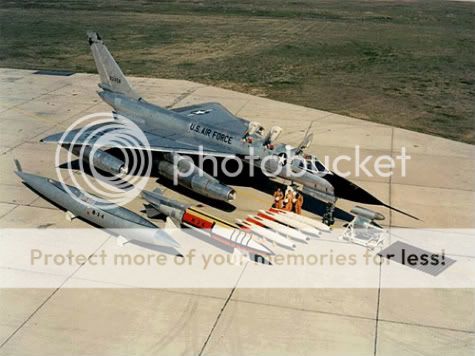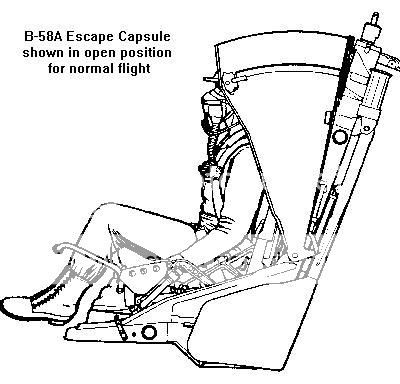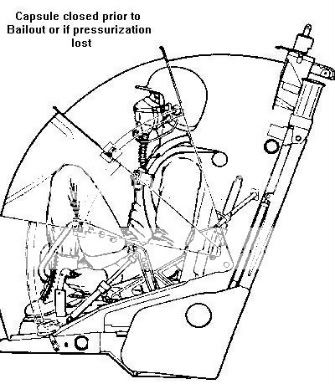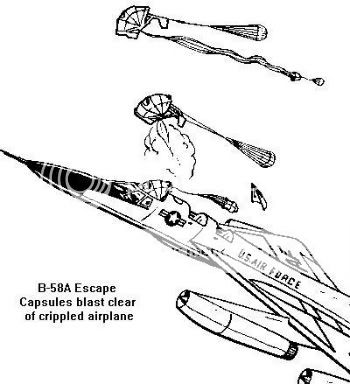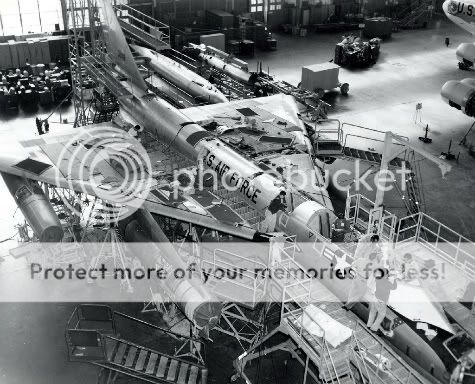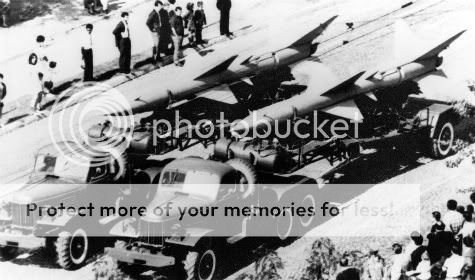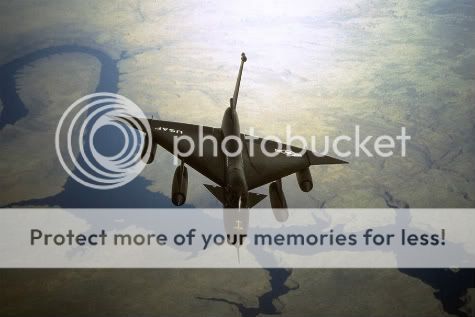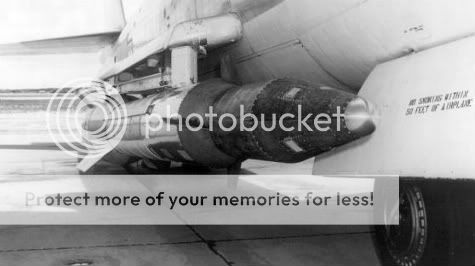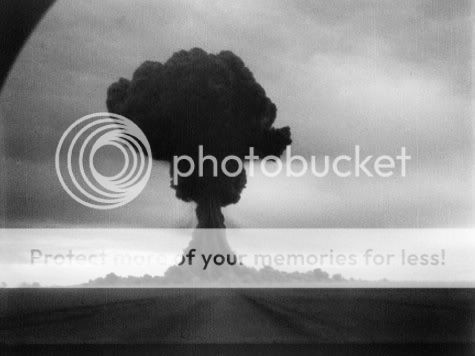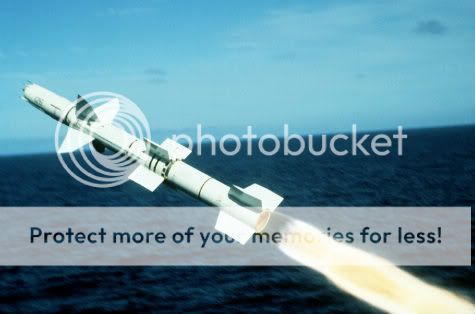Delta Force
Banned
The Boeing Brothers
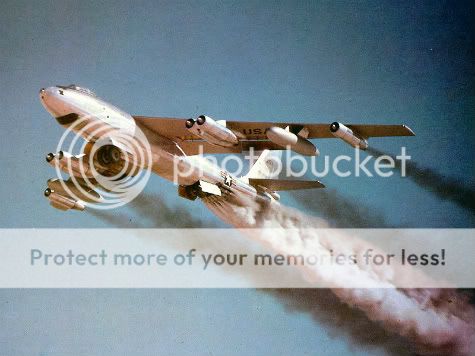
Performing a Minimum Interval Takeoff in the B-47 was a hazardous operation due
to the low performance of the jet engines, forcing reliance on water injection and
RATO rockets. A engine failure or other mishap during MITO takeoff could rapidly
lead to disaster.
Boeing was a major supplier of early jet aircraft for Strategic Air Command, starting with its B-47 Stratojet. While many of the design features of the aircraft later went on to play a major role in the development of subsonic bombers and jetliners, the B-47’s swept wing appearance and podded engines were radical for the 1940s. While introducing Strategic Air Command to jet powered aircraft, the B-47 was hampered by early jet engine technology, requiring water injection and rocket assisted takeoff motors to get airborne when heavily loaded. Although improvements in engine technology offered the potential for a model with greater performance and efficiency, Strategic Air Command was looking forward to the delivery of the new B-58 in a few years which promised much higher speeds and performance than possible from the B-47's legacy airframe.
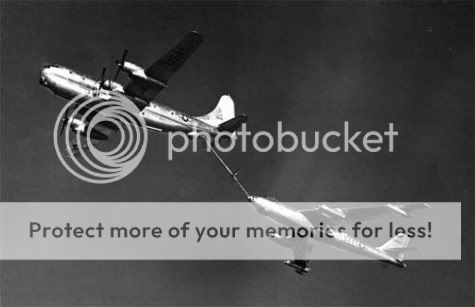
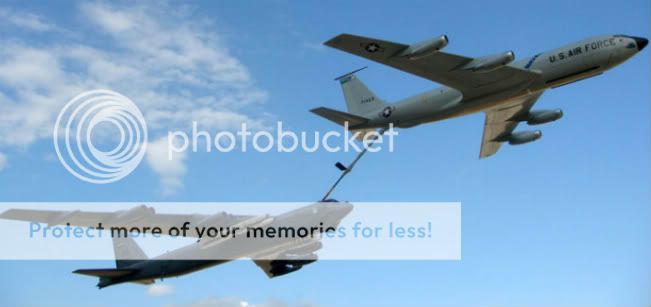
These two images illustrate the evolution of aerial refueling over the past 50 years, and also its heritage. The left image features a prop-driven KC-97 refueling a throttled back B-47 jet bomber.
Although an awkward arrangement from the start, the increasing performance of jet aircraft made it very dangerous as well. The 1958 collision of a B-52 with its KC-97 refueling aircraft led to the
retirement of the KC-97 by mid-1959. In contrast, the B-52 and KC-135, shown in the right image, continue to serve with the United States Air Force after over 50 years of service.
The six General Electric J47 turbojets of the B-47 were very fuel thirsty, leading to low loiter times and providing the impetus for the development of aerial refueling. The Boeing KC-97 was the first aircraft used for such refueling operations, but as jet aircraft became increasingly more powerful and common a jet powered replacement was sorely needed, as the KC-97’s maximum speed was increasingly close to the stall speed for the aircraft being refueled. While some KC-97s were converted to use turbojets, the aircraft were replaced by the Boeing KC-135 Stratotanker starting in the mid-1950s. The Stratotanker continues in service today, one of only a few aircraft to have served for 50 years with its original operator.
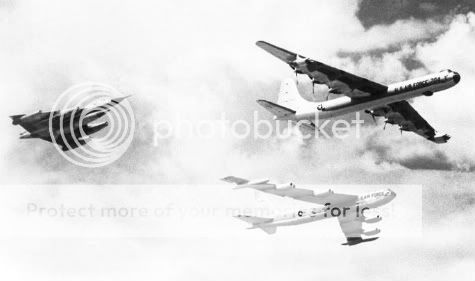
The B-36, B-52, and B-58 served together alongside each other in Strategic Air
Command for only a year before the B-36's retirement in 1959.
While the B-47 was retired from frontline service in the 1960s in favor of the new B-58 Hustler, its bigger brother the B-52 continues in service with Strategic Air Command. The B-52 was selected to replace Convair’s massive B-36 Peacekeeper as Strategic Air Command’s long range bomber, beating out the jet powered Convair YB-60, itself a B-36 derivative. Although many in the Air Force pushed for the B-52 to be retired in favor of supersonic bombers during the 1960s, the aircraft continues in service because of its excellent loitering and conventional bombing capabilities derived from its subsonic speed. These abilities proved crucial during the Second Korean War, with the B-52 and its soon to be retired predecessor the B-47 dropping more bombs over North Korea than were dropped during all of World War II, a role which will be discussed more in depth in future installments.
-----
This is essentially a historical update, with nothing really having diverged from history, except for that part about the Second Korean War of course. I did come across a few interesting videos while researching this part of the timeline you might be interested in watching:
B-36 Peacekeeper Documentary
B-47 RATO Takeoff
KC-97 Refueling B-47

Performing a Minimum Interval Takeoff in the B-47 was a hazardous operation due
to the low performance of the jet engines, forcing reliance on water injection and
RATO rockets. A engine failure or other mishap during MITO takeoff could rapidly
lead to disaster.
Boeing was a major supplier of early jet aircraft for Strategic Air Command, starting with its B-47 Stratojet. While many of the design features of the aircraft later went on to play a major role in the development of subsonic bombers and jetliners, the B-47’s swept wing appearance and podded engines were radical for the 1940s. While introducing Strategic Air Command to jet powered aircraft, the B-47 was hampered by early jet engine technology, requiring water injection and rocket assisted takeoff motors to get airborne when heavily loaded. Although improvements in engine technology offered the potential for a model with greater performance and efficiency, Strategic Air Command was looking forward to the delivery of the new B-58 in a few years which promised much higher speeds and performance than possible from the B-47's legacy airframe.


These two images illustrate the evolution of aerial refueling over the past 50 years, and also its heritage. The left image features a prop-driven KC-97 refueling a throttled back B-47 jet bomber.
Although an awkward arrangement from the start, the increasing performance of jet aircraft made it very dangerous as well. The 1958 collision of a B-52 with its KC-97 refueling aircraft led to the
retirement of the KC-97 by mid-1959. In contrast, the B-52 and KC-135, shown in the right image, continue to serve with the United States Air Force after over 50 years of service.
The six General Electric J47 turbojets of the B-47 were very fuel thirsty, leading to low loiter times and providing the impetus for the development of aerial refueling. The Boeing KC-97 was the first aircraft used for such refueling operations, but as jet aircraft became increasingly more powerful and common a jet powered replacement was sorely needed, as the KC-97’s maximum speed was increasingly close to the stall speed for the aircraft being refueled. While some KC-97s were converted to use turbojets, the aircraft were replaced by the Boeing KC-135 Stratotanker starting in the mid-1950s. The Stratotanker continues in service today, one of only a few aircraft to have served for 50 years with its original operator.

The B-36, B-52, and B-58 served together alongside each other in Strategic Air
Command for only a year before the B-36's retirement in 1959.
While the B-47 was retired from frontline service in the 1960s in favor of the new B-58 Hustler, its bigger brother the B-52 continues in service with Strategic Air Command. The B-52 was selected to replace Convair’s massive B-36 Peacekeeper as Strategic Air Command’s long range bomber, beating out the jet powered Convair YB-60, itself a B-36 derivative. Although many in the Air Force pushed for the B-52 to be retired in favor of supersonic bombers during the 1960s, the aircraft continues in service because of its excellent loitering and conventional bombing capabilities derived from its subsonic speed. These abilities proved crucial during the Second Korean War, with the B-52 and its soon to be retired predecessor the B-47 dropping more bombs over North Korea than were dropped during all of World War II, a role which will be discussed more in depth in future installments.
-----
This is essentially a historical update, with nothing really having diverged from history, except for that part about the Second Korean War of course. I did come across a few interesting videos while researching this part of the timeline you might be interested in watching:
B-36 Peacekeeper Documentary
B-47 RATO Takeoff
KC-97 Refueling B-47
